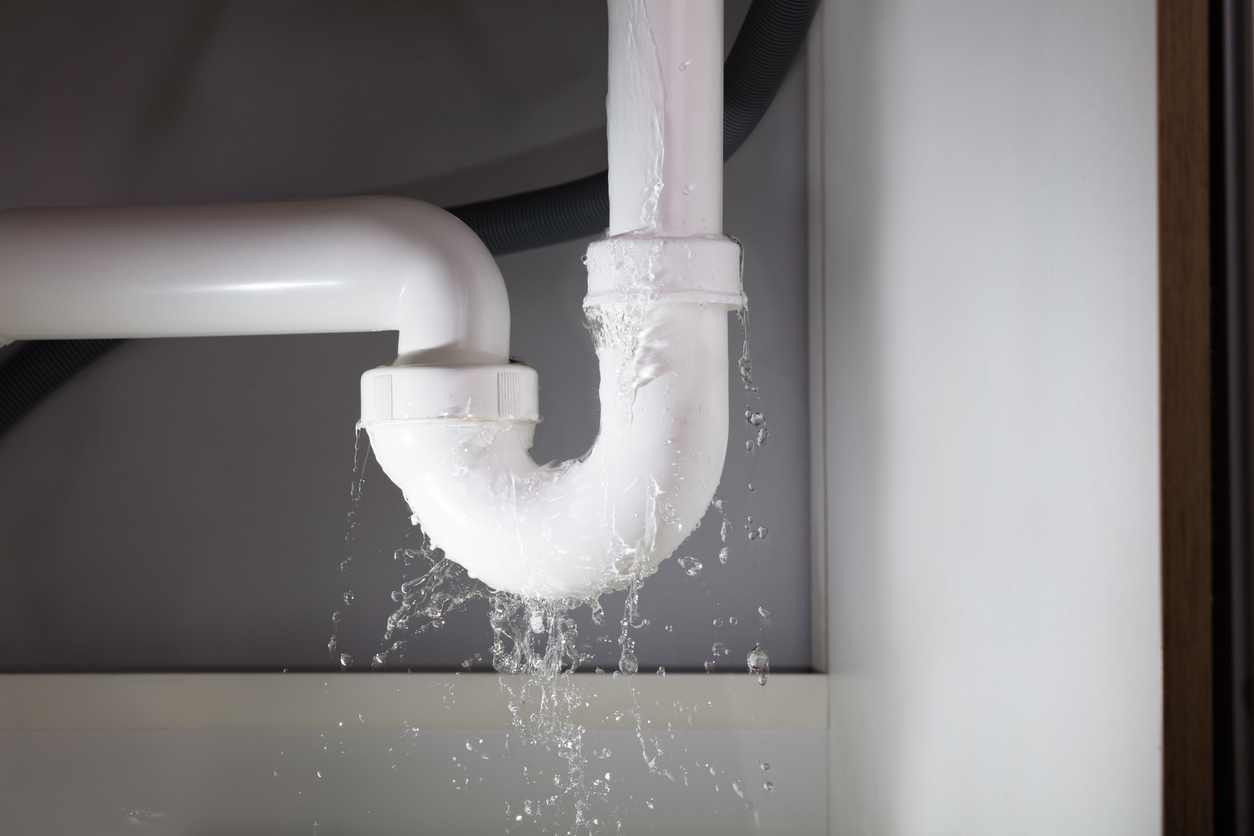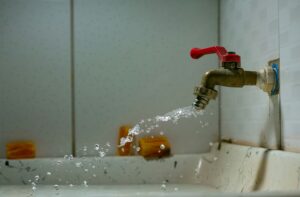Water damage might not sound like a big deal—until you’re facing a soaked carpet, peeling walls, or a mouldy ceiling. It sneaks in through the smallest leaks and can cost you thousands before you even realise there’s a problem. That’s where the right professional steps in. A Plumber in Orange knows exactly what to look for, how to stop the leaks, and more importantly, how to prevent them from happening in the first place.
Common Causes of Household Water Damage
Water can sneak in from all directions. Some usual culprits are:
- Burst or blocked pipes: These top the list – about 46% of Australian water-damage insurance claims come from failing pipes. Old galvanized pipes, tree roots in drains or extreme water pressure can cause a sudden rupture.
- Damaged roofs and gutters: In Orange’s climate (hot summers and frosty winters), cracked tiles or blocked gutters send rainwater cascading inside. Roof leaks account for roughly 27% of claims.
- Faulty appliances: Washing machines, dishwashers or fridges have flexible hoses that can burst. Chubb Insurance warns that a single burst flexi-hose can pour 600 litres per hour into your home. No wonder burst hoses are a leading cause of damage!
- Old plumbing: Aging installations corrode or crack. A slow, unnoticed seep from a 50-year-old pipe can rot timber and plaster over time. In other words, “what seems small today can be catastrophic tomorrow.”
- Clogged drains/overflows: Blocked sinks or stormwater drains can overflow and seep into walls or yards. Even an overflowing toilet or tank left running can flood a home.
The takeaway? Leaks often start small. That drippy tap or damp ceiling patch is a red flag, not something to “just live with.”
Signs of Hidden Leaks
Hidden leaks are tricky, but there are telltale clues. Keep an eye (and nose) out for:
- Rising water bills: Check your bill month-to-month. If it spikes without explanation, a leak could be the culprit. Even your water meter can tip you off – if the dial turns with all taps off, you’ve got a leak.
- Stains and discoloration: Yellow or brown patches on ceilings, walls or skirting boards usually mean water is seeping through somewhere. It’s not just unsightly – it’s a slow leak telling you to act!.
- Musty smells or mould: Smell a funky odour near a wall? Spot mould near pipes or in the bathroom? Long-term moisture fosters mould growth and even health issues. A mildew smell in an unlikely spot is a neon sign for a hidden leak.
- Peeling paint or wallpaper: Bubbling or lifting paint means damp has crept under the surface. It’s like the wall crying out that it’s been soaked.
- Sounds of running water: Hear water trickling when nothing’s on? Don’t ignore it – it could be a pipe hissing inside a wall or under the floor. That “drip-drip” might turn into a deluge if left unchecked.
- Oddly lush patches in the yard: Yes, even outdoors. The Western Australia WaterCorp notes that soggy lawns, lush green spots or uneven paving can signal underground leaks. Water escaping your irrigation or sewer can bulge pathways or feed super-fertile grass.
If you notice any of these signs of hidden leaks, it’s time to call a plumber before your small annoyance becomes a six-figure headache.
Why Regular Plumbing Check-ups Matter
Think of plumbing like your car engine – regular check-ups catch problems early. Most homeowners don’t notice plumbing issues until disaster strikes, but a yearly inspection by a licensed plumber can save you thousands. As Big Blue Plumbing (QLD) explains, small leaks and damaged parts “may be disastrous” if ignored.
A professional inspection will scan everything from water heaters and exposed pipes to sewage lines and roof plumbing. The plumber looks for corrosion, weak joints or blockages you’d never spot. Catching these early is far cheaper than fixing a blowout later. For example, replacing a corroded valve now might cost a couple of hundred dollars, versus thousands to renovate a waterlogged bathroom later. Prevention is cheaper than repair – that’s the rule of thumb.
As plumbing experts put it: regular maintenance is “the absolute best prevention measure”. Even if nothing looks wrong, an annual tune-up ensures tiny issues don’t spiral. Remember, a stitch in time saves nine – or in plumbing terms, a leak fixed now saves a flood tomorrow.
When a Timely Callout Saves the Day
Plumbers see it all the time: a quick service call can head off multiple disasters. In practice, calling in a pro early often “saves you thousands of dollars in the future”. How? Because once the plumber is on site, they can fix the immediate problem and perform other minor fixes for the same trip. Salmon Plumbing (Brisbane) puts it bluntly: schedule routine maintenance and you get “two (or more) for the price of one!”.
For example, imagine a dripping ceiling pipe. In one visit, the plumber not only repairs the leak but might also reinforce a slightly rusted drain or test your hot water system. By doing this all at once, you avoid a second call-out fee later. This proactive approach is like paying for a whole home tune-up instead of emergency repairs. It’s the same logic as going to the doctor for an annual check instead of waiting until you’re really sick.
Bottom line: if you see an early warning sign, don’t delay – pick up the phone. That $200 call-out today could spare you a $10,000 restoration bill next month. A plumber in orange will gladly check twice to make sure you don’t pay twice.
Prevention vs. Repair: The Cost Comparison
Here’s the brutal math: a little spent on prevention avoids a bundle spent on repair. The table below gives ballpark Australian costs for common scenarios:
| Service / Issue | Typical Cost (AUD) |
| Annual plumbing inspection | ~$150–$300 (around, DIY or pro) |
| Minor leak repair (tap, valve) | ~$100–$500 |
| Major leak or pipe replacement | ~$1,000–$5,000 |
| Water damage restoration (walls, etc.) | ~$2,000–$6,000 (often more) |
| Full flood/mold remediation | $10,000+ (major insurance claim range) |
These numbers don’t mean you’ll definitely pay the high end – costs vary by the problem’s size. But note the pattern: a routine inspection or simple repair is a tiny fraction of a restoration job. According to Airtasker, even fixing water-damage issues typically runs up to $6,000 (median around $2,160). QBE insurer reports the average water-damage claim is about $5,000. That’s a big hit.
Preventing that $5K (or more) disaster with a $200 check-up is a no-brainer. It’s like buying insurance on your insurance – smart.
Local Know-How: Why an Orange Plumber Matters
Not all plumbers are interchangeable. The Aussie bush doesn’t exactly turn into a desert or a snowfield overnight, but Orange’s climate and homes do have their quirks. We get frosty winters (freezing pipes), hot summers (Poly-b pipe stress), and random hailstorms (roof damage). If your plumber usually works in balmy Brisbane, they might not know to insulate your pipes against cold snaps in Orange.
Likewise, building types differ. Many Orange homes have heritage brickwork or stone foundations. A local plumber knows the right fix (or product) for our older structures versus a new build. Even the soil here is a factor – shifting ground can strain your pipes and drains differently than in coastal areas. A plumber with local experience will spot these issues and know the local council’s building standards too.
Pro Tip: Always hire a licensed, insured plumber. The Master Plumbers Association (NSW) insists plumbers be licensed and background-checked. You can actually verify a plumber’s licence on the NSW Service website. Ask for references and make sure they carry public liability insurance. A good plumber will quote clearly upfront and stand by their work.
In short, a plumber in Orange will bring local expertise: they understand our weather, our homes, and they’re on call nearby when the unexpected happens. Plus, you’re supporting a local business – a win-win.
Smart Plumbing Tech: Leak Sensors & Shutoff Systems
Nowadays, technology is on your side. Smart leak detectors and auto shutoff valves are game-changers. These nifty devices act like a 24/7 plumber’s watchdog. For example, a small Wi-Fi sensor under the sink will text you the instant it feels moisture. More advanced systems monitor your whole home’s water flow and can automatically cut the water if a major leak is sensed.
In practice: imagine you’re on holidays and a pipe bursts under the house. A smart sensor alerts you by phone and can even flip a shut-off valve before your house turns into Niagara Falls. Chubb Insurance notes that only about 1.5% of Aussie homes have such a shutoff device – meaning most people are missing an easy safeguard. Even a basic sensor costs only a few tens of dollars (check Bunnings or Amazon), while a complete flow-based system (e.g. Flo by Moen or Phyn) might be $600–$1,300 installed.
These devices don’t just save your floor – they can save you money. Insurers like Chubb and QBE now reward customers who install leak-detectors, sometimes with premium discounts. Users report stories of these sensors catching drips that would’ve flooded homes. As Mr Blockage Plumbing puts it, this proactive approach “lowers repair costs and reduces potential damage”.
By the way: if you’re shopping for one, look for features like mobile alerts, automatic shutoff, or usage reports. Popular brands include Flo by Moen, Guardian, LeakBot and even simple D-Link water sensors.
In short, smart tech is like having an extra plumber in your house 24/7 – minus the coffee breaks. In our increasingly “smart home” world, it’s one more tool to keep your Orange home safe and dry.
How to Find a Reliable Plumber in Orange
Finding a good plumber can feel tricky, but here are some solid tips:
- Check Credentials: Make sure any plumber is licensed and insured. Ask to see their NSW Plumbing Licence (each licensee has a number you can verify online). Also, plumbing apprenticeships are mandatory, so don’t hesitate to request proof of their qualifications.
- Seek Reviews & Referrals: Word-of-mouth is gold. Ask friends, family or neighbours if they’ve got a trusted plumber. Check online reviews (Google, Facebook, local forums) for any mentions of the plumber. A pro with a good reputation will have satisfied customers and positive feedback.
- Get Clear Quotes: A reliable plumber will give you an upfront quote or estimate. They should explain what’s included and warn you if conditions change. Avoid anyone who gives vague answers or significantly changes their price mid-job. Transparency is key.
- Warranties and Communication: A top-notch plumber will guarantee their workmanship and parts. This means if something fails soon after the repair, they’ll come back to fix it at no extra charge. Good communication is also vital – they should arrive on time and explain what they’re doing in plain English.
In short, shop around a bit. Don’t be shy to call two or three plumbers, ask the same questions, and compare their answers. An honest local plumber will welcome your questions and make you feel comfortable. As one guide advises: a reputable plumber will “always carry liability insurance” and be a member of the professional association. Checking for these signs means peace of mind in Orange and beyond.
Emergency Plumbing: 24/7 Help When You Need It
Sometimes leaks don’t wait for business hours. That’s why many Orange plumbers offer emergency services (yes, even at 2am on a Sunday!). This includes fixing burst pipes, major leaks or sewer backups immediately. It’s a bit more costly (overnight or holiday call-outs can double the fee), but those extra dollars are worth it when every minute of flow adds up to more water damage.
Emergency plumbing tip: If you wake up to a burst pipe or a river in the bathroom, first shut off your main water valve (usually under the house or near the water meter). Then call the emergency plumber. These guys know this city’s streets and can respond fast. By acting immediately, you prevent damage from spreading – possibly saving you thousands in cleanup costs. It’s like putting out a small fire before it becomes an inferno.
Lastly, keep some emergency numbers handy (store them in your phone). Ideally, find one plumber who does 24/7 service and keep their number on speed dial. That way, when disaster strikes, help is just a call away. Warning: Don’t wait in an emergency. A few minutes of running water can cause hours of damage (and heartache).
Conclusion
Water damage doesn’t have to drench your dreams – especially when you have a savvy plumber in Orange on your side. We’ve covered how small leaks grow, what warning signs to watch for, and how a bit of planning (annual checks, smart sensors, etc.) goes a long way. Remember, even though Orange feels laid-back, our homes can’t withstand neglect: insurers warn that water damage now tops Aussie home-claim lists.
Key Takeaways: Look out for odd stains or high water bills. Schedule a professional plumbing inspection every year. Consider installing leak detectors and an auto shut-off device. And always hire licensed, local plumbers who know Orange’s unique needs.
Ready to sleep easy? Call your local Orange plumber for an inspection or quote – they’ll make sure your pipes are tip-top. It’s far cheaper than cleaning up after a flood. After all, a stitch in time really does save nine… or in this case, potentially thousands of dollars in repairs!
FAQs
-
What are the common signs of hidden plumbing leaks in my home?
Watch for unusual clues: an unexplained spike in your water bill or a water meter still moving with no taps on is a big hint. Indoors, look for yellow/brown stains on walls or ceilings and peeling paint – these often mean water has been dripping behind the surface. A musty smell or mould patches near pipes is another warning. Even hearing water running when all taps are off is a sign of trouble. Even outdoors, soggy, overgrown patches of lawn can indicate an underground leak. In short, never ignore odd sounds, smells or spots of moisture – they could be masking a serious leak.
-
How much do water damage repairs typically cost in Australia?
It can add up fast. Simple jobs like fixing a dripping tap or small leak usually cost a few hundred dollars. But once water soaks into walls, floors or ceilings, restoration can run into the thousands. For example, guides estimate water-damage cleanup often falls between $2,000 and $6,000, and complex jobs can exceed that. Insurers report the average claim for home water damage is about $5,000. Massive floods or mold remediations can cost $10,000 or more. By contrast, annual inspections or minor repairs might only cost $150–$300, making prevention much cheaper than a big repair bill.
-
How do I find a reliable, licensed plumber in Orange?
Start local: ask neighbours or check community groups for recommendations. Make sure any plumber is properly licensed and insured (in NSW you can verify their licence on the Service NSW site). Look for Master Plumbers Association members, who meet industry standards. Read online reviews and get a written quote before they start. A reputable plumber will offer warranties on their work, show up on time, and explain costs clearly. Don’t settle for the first random name you find; a bit of homework – checking credentials and reviews – can help you pick a trustworthy Orange plumber who won’t leave you high and dry (or underwater!).
-
What are the common signs of hidden plumbing leaks in my home?
Watch for unusual clues: an unexplained spike in your water bill or a water meter still moving with no taps on is a big hint. Indoors, look for yellow/brown stains on walls or ceilings and peeling paint – these often mean water has been dripping behind the surface. A musty smell or mould patches near pipes is another warning. Even hearing water running when all taps are off is a sign of trouble. Even outdoors, soggy, overgrown patches of lawn can indicate an underground leak. In short, never ignore odd sounds, smells or spots of moisture – they could be masking a serious leak.
-
How much do water damage repairs typically cost in Australia?
It can add up fast. Simple jobs like fixing a dripping tap or small leak usually cost a few hundred dollars. But once water soaks into walls, floors or ceilings, restoration can run into the thousands. For example, guides estimate water-damage cleanup often falls between $2,000 and $6,000, and complex jobs can exceed that. Insurers report the average claim for home water damage is about $5,000. Massive floods or mold remediations can cost $10,000 or more. By contrast, annual inspections or minor repairs might only cost $150–$300, making prevention much cheaper than a big repair bill.
-
How do I find a reliable, licensed plumber in Orange?
Start local: ask neighbours or check community groups for recommendations. Make sure any plumber is properly licensed and insured (in NSW you can verify their licence on the Service NSW site). Look for Master Plumbers Association members, who meet industry standards. Read online reviews and get a written quote before they start. A reputable plumber will offer warranties on their work, show up on time, and explain costs clearly. Don’t settle for the first random name you find; a bit of homework – checking credentials and reviews – can help you pick a trustworthy Orange plumber who won’t leave you high and dry (or underwater!).


